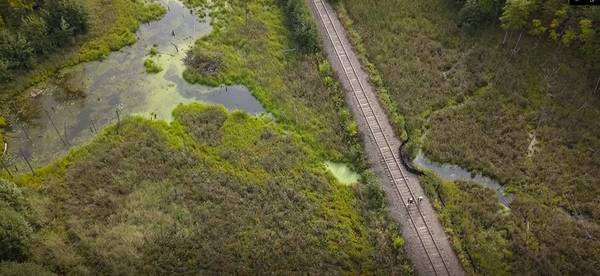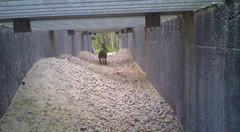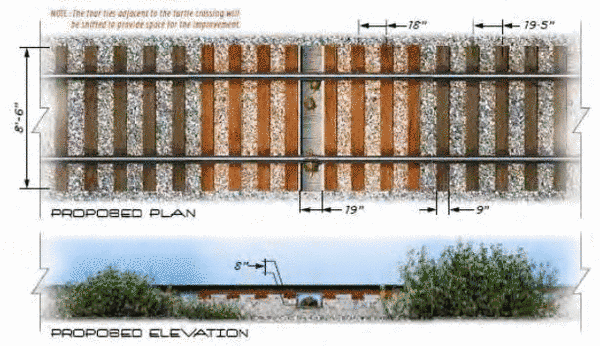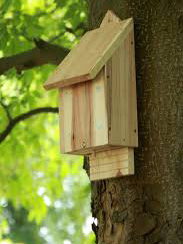Environmental measures
The Rapibus corridor will pass through woodlots, wetlands and waterways in parc du Lac-Beauchamp. The construction zone, including the existing train tracks, will represent approximately 3% of the park's total surface area. From the very start, the STO has been committed to complying with all of the applicable statutory environmental requirements and to applying environmental measures that would reduce, as much as possible, the impact of the construction work.
To ensure that it does everything properly, the STO is working in collaboration with Ville de Gatineau and Quebec's ministère des Transports, ministère de l'Environnement et de la Lutte contre les changements climatiques, and ministère des Forêts, de la Faune et des Parcs, as well as with Fisheries and Oceans Canada. The STO is also relying on JFSA, a firm that specializes in protecting the environment and water resources.
This project will include the following environmental measures:
- identifying and relocating small wildlife;
- adapting and designing culverts and wild life tunnels for the different species;
- installing barriers to protect the wildlife;
- installing bat houses and bird nesting boxes;
- revegetating disrupted areas and the counterweight area;
- compensating for the loss of fish habitats; and
- recreating ponds for chorus frogs.
In addition, given that the project will affect approximately 25,000 m2 of wetlands and aquatic media, the STO has injected just over $1.7 M into the Fonds de protection de l'environnement et du domaine hydrique de l'État (information in French only), which is administered by Quebec's ministère de l'Environnement et de la Lutte contre les changements climatiques. This money will be used to fund other environmental projects or compensation measures throughout Gatineau.
Identifying and relocating small wildlife
Execution: field work completed.
In order to prepare the terrain for the work scheduled to begin during the winter of 2020-2021, extensive field work was done in the future construction zone. Close to 4 km of temporary wildlife barriers were set up to delineate the work area. JFSA biologists then relocated outside that area a number of small species, including:
Adapting and designing culverts and wildlife tunnels for the different species
Execution: during construction.
While the construction is underway, the STO will widen the diameter of the existing culverts under the train tracks, and add others. In addition, new wildlife tunnels will be installed under the corridor roadway and the train tracks. The culverts and tunnels will reduce fragmentation between the northern and southern portions of parc du Lac-Beauchamp. They will also ensure the free flow of surface water in the park and make it easier for fish, amphibians, reptiles and small mammals to get around.
- Culverts under the Rapibus corridor, the bike path and the train tracks:
- 2 culverts for water and fish;
- 2 mixed culverts for water and fish, with dry platforms for small wildlife; and
- 3 wildlife culverts.
- Wildlife tunnels under the Rapibus corridor roadway and the bike path:
- 3 wildlife tunnels with light shafts are planned. The exits will be fitted with a passageway between two track ties for the safety of small wildlife such as turtles.
Installing barriers to protect the wildlife
Execution: during construction.
The GDR consortium plans and specifications include a concrete Jersey barrier between the train tracks and the Rapibus corridor where the buses will run. A permanent wildlife barrier is also planned between the bike path and the natural environment on the north side. These measures are designed to protect small mammals by preventing them from getting onto the Rapibus corridor or the bike path.
- north side: permanent wildlife barrier along the route next to the natural environment;
- south side: directional fence up to 100 metres long on both sides of the wildlife tunnels guiding animals to the tunnels and ending in a “J” pattern.
Installing bat houses and bird nesting boxes
Execution: after the construction.
In order to replace some of the dead trees and the loss of certain natural habitats, two bat houses, two bird nesting boxes for tree swallows and two bird nesting boxes for wood ducks will be installed in strategic locations in parc du Lac-Beauchamp. They will be installed after the construction of the Rapibus corridor extension has been completed.
Revegetating the disrupted areas and the counterweight area
Execution: during construction.
The Rapibus corridor will cross wetlands, including two bogs. One of them will require a counterweight to assure its stability because its soil is spongier, with a thick fibrous membrane in places. Granular material will be deposited to add weight until the fibrous part is sufficiently compacted. In order to avoid “piercing” that fibrous membrane and thereby destabilizing the support balance, several layers will be spread to achieve passive consolidation (natural compacting), which can take 4 to 6 months.
This will be followed by two types of seeding to renaturalize this counterweight:
- stabilization through native plants to offset surface erosion and help stabilize slopes and embankments - this mix consists exclusively of native species, which grow naturally in Quebec, and will be used to renaturalize the environment; and
- Pioneer Plus, a mix of native plant species, but of a more robust kind, to kick start the ecological succession process in order to create habitats including herbaceous, brush and ultimately tree strata.
The seeding will be spread over two years:
- first summer: crushed stone, gardening soil and hydroseeding; and
- second summer: if necessary, adjustments to the hydroseeding to ensure that the right species are growing. In addition, 245 shrubs will be planted to promote renaturalization.
Compensating for the loss of fish habitats
Execution: during construction.
The Rapibus corridor will pass through wetlands and, inevitably, a number of fish habitats will be affected. In order to compensate for this disruption, a number of projects were submitted to Fisheries and Oceans Canada. The one with the most direct positive impact on the site was selected.
There is a pile wall on the eastern portion of the Wabassee creek. This pile wall restricts the mobility of fish between the different wetlands, thereby reducing biodiversity. Water only flows between the two portions for a few days of the year, as a result of which the quality of the habitat downstream from the pile wall has suffered significantly.
The selected project will enable the water flowing from the northeastern portion of the Wabassee creek to circulate and pass over the pile wall for a longer period of weeks, even months, depending on the weather. The measures that will be introduced downstream from the pile wall will enhance the quality of the habitat for the fish, and thereby enhance the waterway's biodiversity. Those measures are as follows:
- a notch will be cut into the pile wall, which will have a direct impact on the water level and on the free passage of fish;
- the creek will be contained in a narrower channel (reprofiling) to increase the water nappe, that is to say its height;
- in certain places along the creek, trenches will be dug for the fish to rest in; and
- more than 16,800 willow cuttings, approximately 385 shrubs and native plant species seeds will be spread on the banks of the Wabassee creek, as will more than a hundred trees on the north side, in order to create a visual barrier between the park and the boulevard Saint-René industrial park.
Recreating ponds for chorus frogs
Execution: during construction.
The work will impact a wetland where chorus frogs live and reproduce. One of the environmental measures adopted is the creation of a new habitat that is favourable for this tiny species. This is a unique and rare project in Canada! After Boucherville, Gatineau will be the second Canadian city to try such an experiment.
To begin with, the choice of location will be critical, ideally a watershed into which water flows from every direction. The next step will be to assess the soil percolation (speed at which water penetrates into the ground). The water level must be precisely determined or competing species might move into the pond, as a result of which it would no longer be suitable for the chorus frog's reproduction. Based on those criteria, the pond's depth, shape and surface area can be determined. After that, the appropriate vegetation for chorus frogs, such as cattails and willows, will be introduced in and around the pond.
The lifespan of a chorus frog is 2 to 3 years. Relocating older chorus frogs reduces their chances of reproduction to next to nil. Transplanting the eggs into their new habitat would be the best option.
If you have any questions about the environmental measures or this public transit project, write us at rapibus@sto.ca















